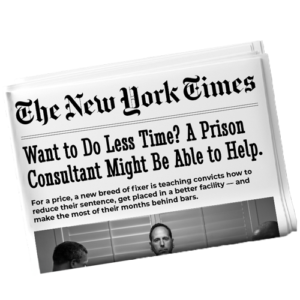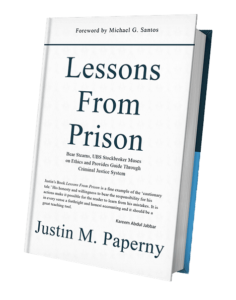“Where is your release plan?”
A Schuykill Federal Prison Camp case manager posed this question to a former banker from Philly.
According to the banker’s wife, Angela, (who called me), the banker replied, “I do not understand what you mean. What is a release plan?”
During my call with Angela, I learned that her husband, the banker, was so certain that he would get probation, he did little to prepare for sentencing.
Instead, the banker received 18 months in prison.
Every month, an average of 800 people opt in through our website at White Collar Advice.
Generally, those people have two primary goals:
1: How to get the shortest prison sentence.
2: How to get out as quickly as possible if prison is part of their sanction.
In our experience, too many people make choices that send them further away from those goals.
For example, many defendants simply outsource the mitigation work to their lawyer. Yet,
Judge Bough told us he discounts part of the lawyer’s message because lawyers are paid advisors.
Judge Pearson said defendants should treat sentencing like a “full-time job” and it is the defendants responsibility to “express every fracture in their life that led to that courtroom.”
Judge Boulware said, “The order of mitigation follows: 1: Defendant, 2: Lawyer, 3: Friends and family. Too many defendants get the order wrong.”
Consider another story:
A healthcare professional called me in late August just after his probation interview. He read the New York Times article about our company. When we spoke, I learned he was expecting a sentence of no more than 12 months and one day in prison.
During our call, we discussed the Mitigation Arc. I suggested he write his personal narrative and send it to the probation officer.
He asked, “Why would I do that?”
I responded, “Well if defendants use their narrative to influence their sentencing judge why not use the narrative to try to influence the recommendation the probation officer will make? Further, Judge Bennett said he would be impressed if he read a probation report and noticed a defendant took the time to write the narrative so far before sentencing.”
He said, “Wow, that makes sense to me.”
I responded, “Me too, but don’t just take my word for it. Listen to our website’s interviews with federal judges and read the reviews from clients who leave their first and last name.”
Three days later the healthcare professional called me again.
“My lawyer said the probation officer didn’t ask for a narrative, so no need to send. Plus he is writing a memo that covers my background stuff. I also have a kickass 15 minute sentencing video made and like 30 letters. Also gambling expert wrote a letter about how I’ve changed and how much discipline I showed not betting on the last Superbowl. I am good man, but thanks.”
I responded, “Thanks for the update. If I thought it would help I would tell you how tragic your text truly is. But I won’t. To the video, several sentencing Judges have told me 4-6 minutes is the ideal length for a sentencing video. In fact, at a conference in 2018 Judge Pearson said, “anything longer than 10 minutes is a problem. Defendants need to respect the court’s time and the Judges calendar.”
The healthcare professional called me again last week. He was distraught.
“‘What happened?” I asked.
He answered, “Thirty months, thirty months, can you believe I got thirty months, thirty months, thirty months, probation officer asked for 18 months, the lawyer said I would never ever get more than a year and day. Can you believe it? Thirty months, thirty months, thirty months. Thirty months, can you believe it?
“I am sorry.” I said.
The banker serving time at Schuykill Prison Camp who had never heard of a release plan and the healthcare executive who called me after getting thirty months have something in common: neither understood the perspective of a judge, probation officer, or case manager. They outsourced work only they, themselves, should have done. Despite the volumes of free content available on our website showing how the work can positively influence a person’s journey, neither did the work to learn it.
Our team cannot guarantee a narrative or release plan will get you the exact outcome you want. We can guarantee there is value in working to counteract the government’s version of events.
Our team shares the depth and breadth of what we’ve learned through decades of experience. We articulate what we have learned from subject-matter experts, including federal judges.
Experience convinces us that the power of the narrative document comes through a defendant’s expression of remorse, sharing personal background details, lessons learned, a commitment to a law-abiding life, and, most importantly, acknowledgment of the victims affected and a plan to make them whole.
If you have already been sentenced, there is value in immediately architecting your release plan. Get started before you surrender to prison. Then, when a case manager asks about your release plan, you are prepared to respond with confidence.
If you have an interest in learning more, join our webinar tomorrow where we will discuss your release plan.
Click this link to join live tomorrow at 10 AM Pacific / 1 PM Eastern
Best,
Justin Paperny
P.S.I RECEIVED PERMISSION TO SHARE THESE STORIES WITH HOPES OF HELPING DEFENDANTS BETTER PREPARE.




